Colombia's Colonial Jewels & the Coffee Triangle
with pre-trip to Bolivia: La Paz & Lake Titicaca
January 31 - February 19, 2019
Part One, Page Three - Bolivia: Lake Titicaca
Link to Part One, Page Three - Lake Titicaca and Tiwanaku

Donkey with Lake Titicaca in the background on Island of the
Sun, an island in the southern part of Lake Titicaca.
Geographically, the terrain is harsh; it is a rocky, hilly island
with many eucalyptus trees. There are no motor vehicles or
paved roads on the island. The main economic activity of the
approximately 800 families on the island is farming, with fishing
and tourism augmenting the subsistence economy.
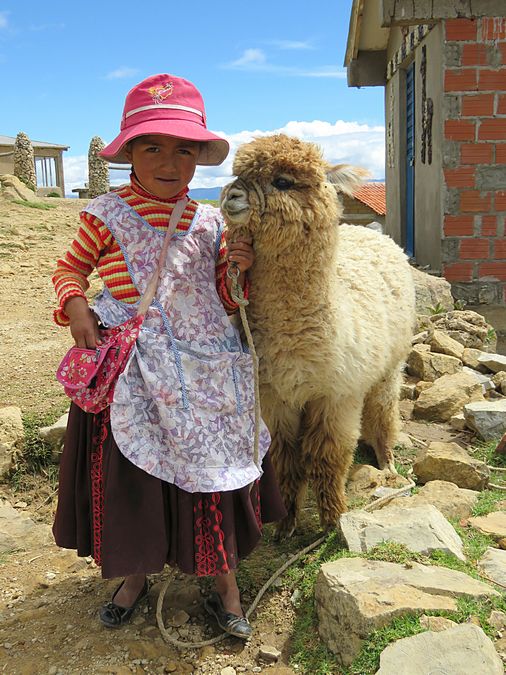
Little girl with baby alpaca seen while we were doing an easy
hike
on the Island of the Sun to a small village along the shoreline.


Part of our hike to the village of Yumani on
Island of the Sun. The altitude there is around
13,000 ft.

View from the village of Yumani

The island inhabitants use donkeys to carry light loads.
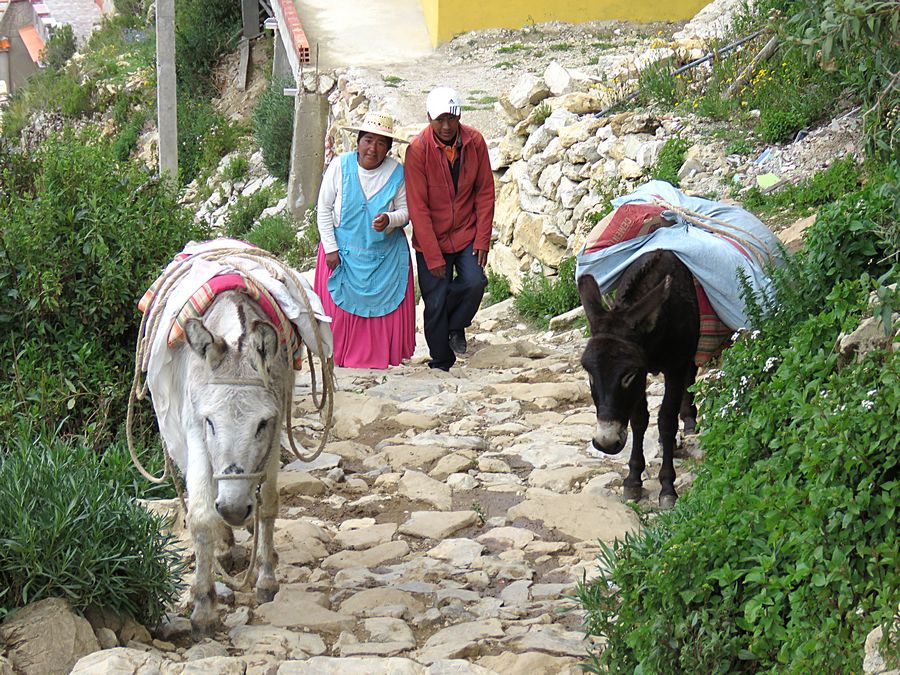
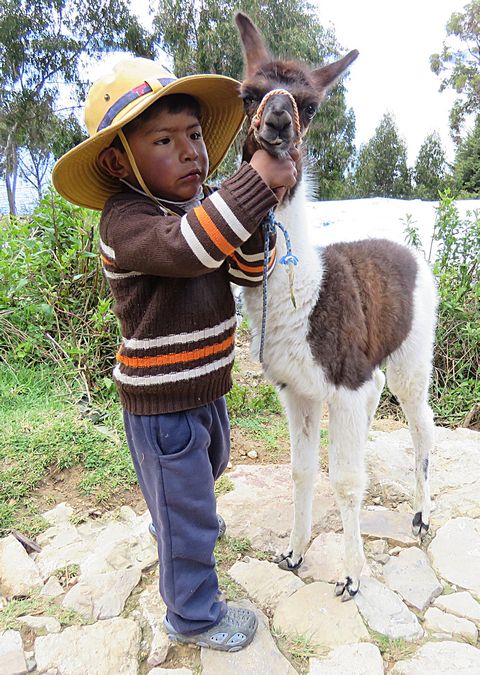
Young boy with a baby llama. The llama's mother had died
when
the baby was born, and the family was trying to keep
it alive by
feeding it from a bottle.

Another view of Lake Titicaca from the village of Yumani
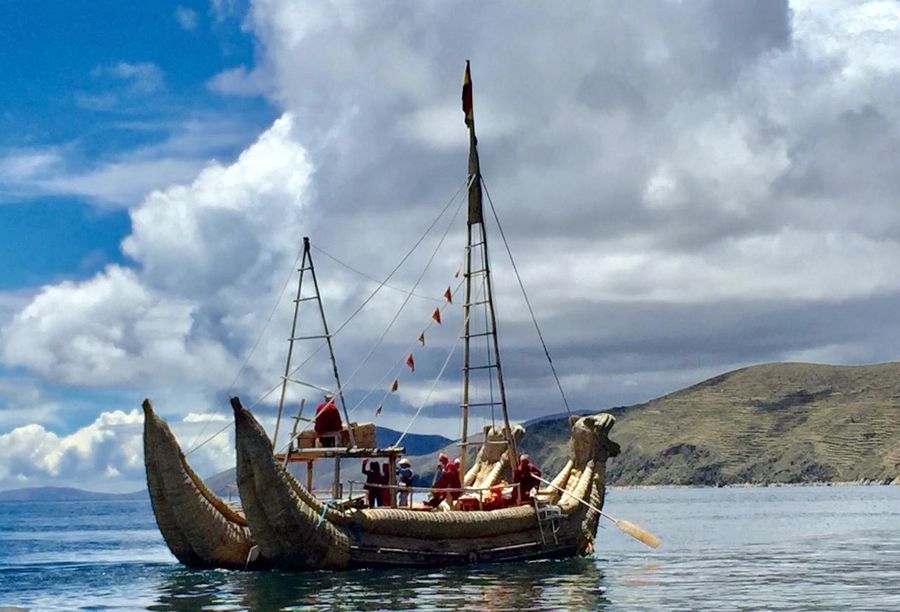
A balsa, a traditional boat handcrafted from totora, the marsh
reeds that grow in shallow water by shore. This is the type of
boat built for the Heyerdahl expedition noted earlier.
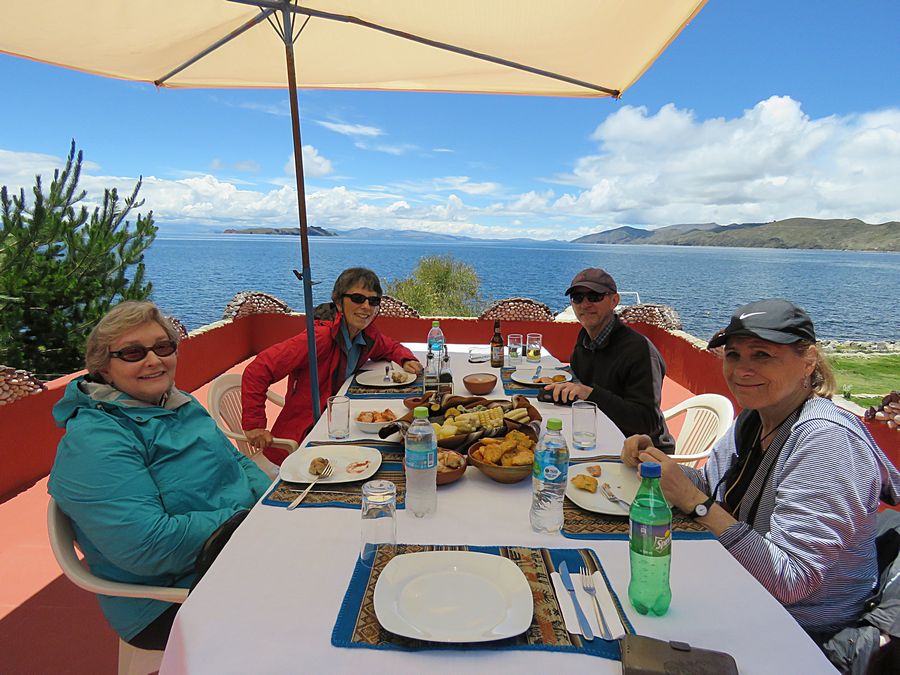
Bobbi from California, Pat, Dan and Liz having lunch with a great
view of the Lake.

A bird near our lunch spot

The boys were waiting for us, at the same spot we had been the
day before, to receive their new shoes (in their hands). Their
mother was also there to thank us. The boys gave us hugs for our
gift.

One of the boys

Holding his new pair of shoes
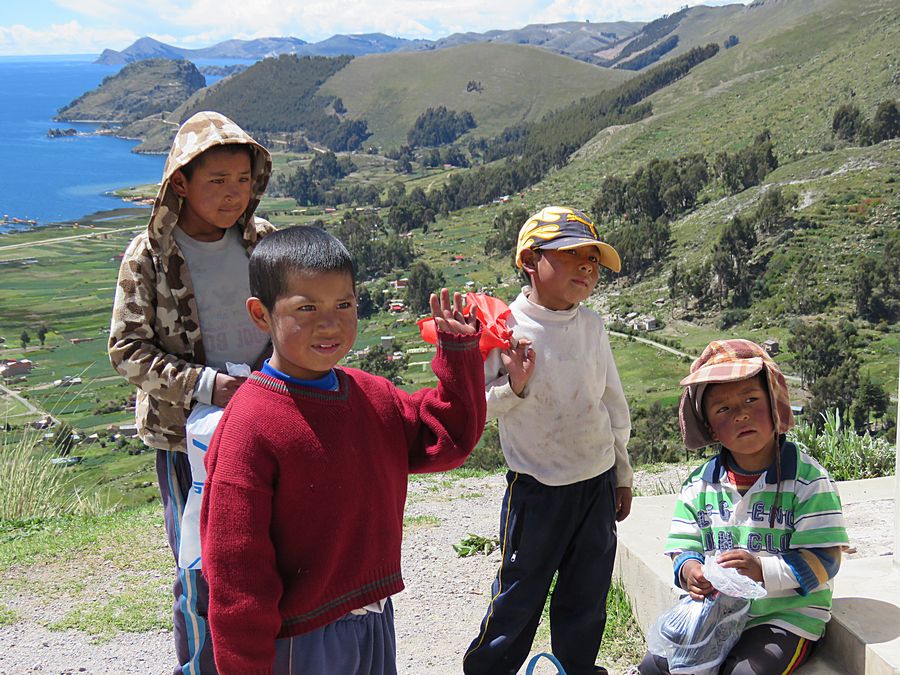
Waving goodbye to us as we drove away in the van.

What looks like a real person hanging on a pole on the outskirts
of the La Paz
metro area is actually an effigy, mock-lynched and
hung
as a warning to
would-be criminals. They can be seen all
over Bolivia, and are a symptom of
a lack of faith
in a police force generally considered to be unable to police
communities because they are either under-resourced or,
worse,
corrupt
and in league with the criminals. Communities
have neighborhood watchers to look out for thieves.

View of La Paz as we were heading to Tiwanaku
archaeological
site.

We stopped along the way to Tiwanaku to visit this farm, not
a planned stop.

The young one had been born yesterday and had a very
protective and doting mother.


The farm had numerous animals, including pigs, cows, donkeys,
chickens, rabbits, guinea pigs, sheep, cats, and dogs.
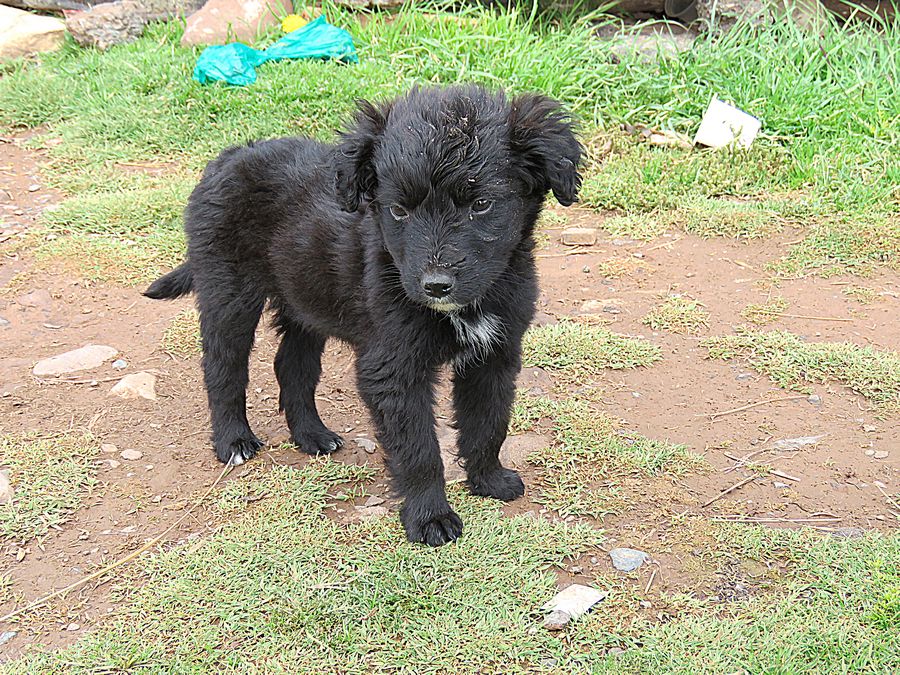
Cute puppy that was wandering around there. Mom was tied
to a rope
nearby but was watching closely.

The female head of the farm. We did
not meet her husband, who is much older, in his 80s.

She was weaving a blanket for her bed.

At Tiwanaku, on the southern shore of Lake Titicaca, used by
a pre-Inca civilization dating back possibly to 300 BC or more.
The people were
great artisans and left behind a series of
mysterious monoliths,
like this one, mostly in granite;
as well as a pyramid, temple, and
aqueducts. It is a UNESCO World Heritage Site.

View of surrounding area from Tiwanaku
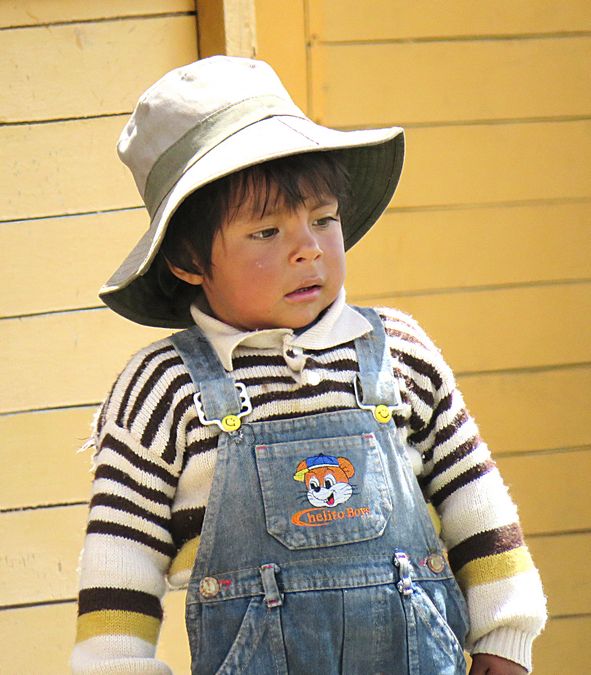
Boy at Tiwanaku who was with his mother, who is a street vendor

Birds like this one were in the area

Gateway of the Sun at Tiwanaku

Carving on the Gateway of the Sun

Carving on the Gateway of the Sun

As the population grew, occupational niches developed.
People began to specialize in certain skills. There was an increase in
artisans, who worked in pottery, jewelry and textiles. Like the
later Inca, the Tiwanaku had few commercial or market
institutions. Instead, the culture relied on elite redistribution.
I.E., the elites of the empire controlled essentially all economic
output, but were expected to provide each commoner with all
the resources needed to perform his or her function. Separation
of occupations was accompanied by hierarchical stratification.
The elite lived in a section surrounded by a moat.
Link to Part Two, Page One - Colombia: Bogota
Pat's Home Page